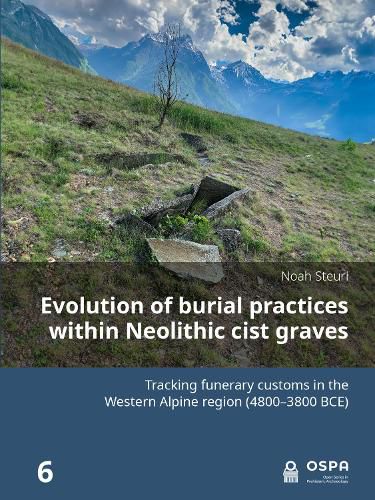Readings Newsletter
Become a Readings Member to make your shopping experience even easier.
Sign in or sign up for free!
You’re not far away from qualifying for FREE standard shipping within Australia
You’ve qualified for FREE standard shipping within Australia
The cart is loading…






In the 5th millennium BCE, the first farming societies in the Western Alps developed unique burial practices characterized by Chamblandes-type graves. These box-shaped graves, constructed from stone slabs or wooden planks, have intrigued archaeologists since the 19th century, particularly around Lake Geneva and the Upper Rhone Valley. This study delves into the origins, spread, and distinctive characteristics of these graves, especially their transalpine significance with an extensive focus on previously under-researched areas like the Italian Aosta Valley or the German-speaking part of Switzerland.
By significantly increasing the number of available radiocarbon dates, as well as comprehensively analyzing the grave goods and the treatment of human remains in the context of funerary practices, the study provides new insights into the chronology and regional variations of Chamblandes-type graves. This research reveals the contemporaneous emergence of the use of these graves in several Alpine valleys and the southern shore of Lake Geneva around 4800 BCE, as well as providing evidence for the process of their subsequent spread and sharp decline in use after 4000 BCE.
The findings reveal shared practices among these early farming communities, yet also indicate distinct funerary customs between inner Alpine valleys and the Swiss Plateau. Highlighting that local prehistoric societies in the Western Alpine region reacted similarly to the death of an individual within the community, as expressed by grave architecture and the treatment of human remains. Demonstrating additionally, that the Alps should not be understood as barriers, but as a conduit for social exchange and interaction across valleys and mountain passes more than 6000 years ago. This nuanced understanding is essential for future research, setting the stage for studies on the social structure, mobility, and diet of these Neolithic populations through paleogenetic and isotopic analyses.
$9.00 standard shipping within Australia
FREE standard shipping within Australia for orders over $100.00
Express & International shipping calculated at checkout
In the 5th millennium BCE, the first farming societies in the Western Alps developed unique burial practices characterized by Chamblandes-type graves. These box-shaped graves, constructed from stone slabs or wooden planks, have intrigued archaeologists since the 19th century, particularly around Lake Geneva and the Upper Rhone Valley. This study delves into the origins, spread, and distinctive characteristics of these graves, especially their transalpine significance with an extensive focus on previously under-researched areas like the Italian Aosta Valley or the German-speaking part of Switzerland.
By significantly increasing the number of available radiocarbon dates, as well as comprehensively analyzing the grave goods and the treatment of human remains in the context of funerary practices, the study provides new insights into the chronology and regional variations of Chamblandes-type graves. This research reveals the contemporaneous emergence of the use of these graves in several Alpine valleys and the southern shore of Lake Geneva around 4800 BCE, as well as providing evidence for the process of their subsequent spread and sharp decline in use after 4000 BCE.
The findings reveal shared practices among these early farming communities, yet also indicate distinct funerary customs between inner Alpine valleys and the Swiss Plateau. Highlighting that local prehistoric societies in the Western Alpine region reacted similarly to the death of an individual within the community, as expressed by grave architecture and the treatment of human remains. Demonstrating additionally, that the Alps should not be understood as barriers, but as a conduit for social exchange and interaction across valleys and mountain passes more than 6000 years ago. This nuanced understanding is essential for future research, setting the stage for studies on the social structure, mobility, and diet of these Neolithic populations through paleogenetic and isotopic analyses.